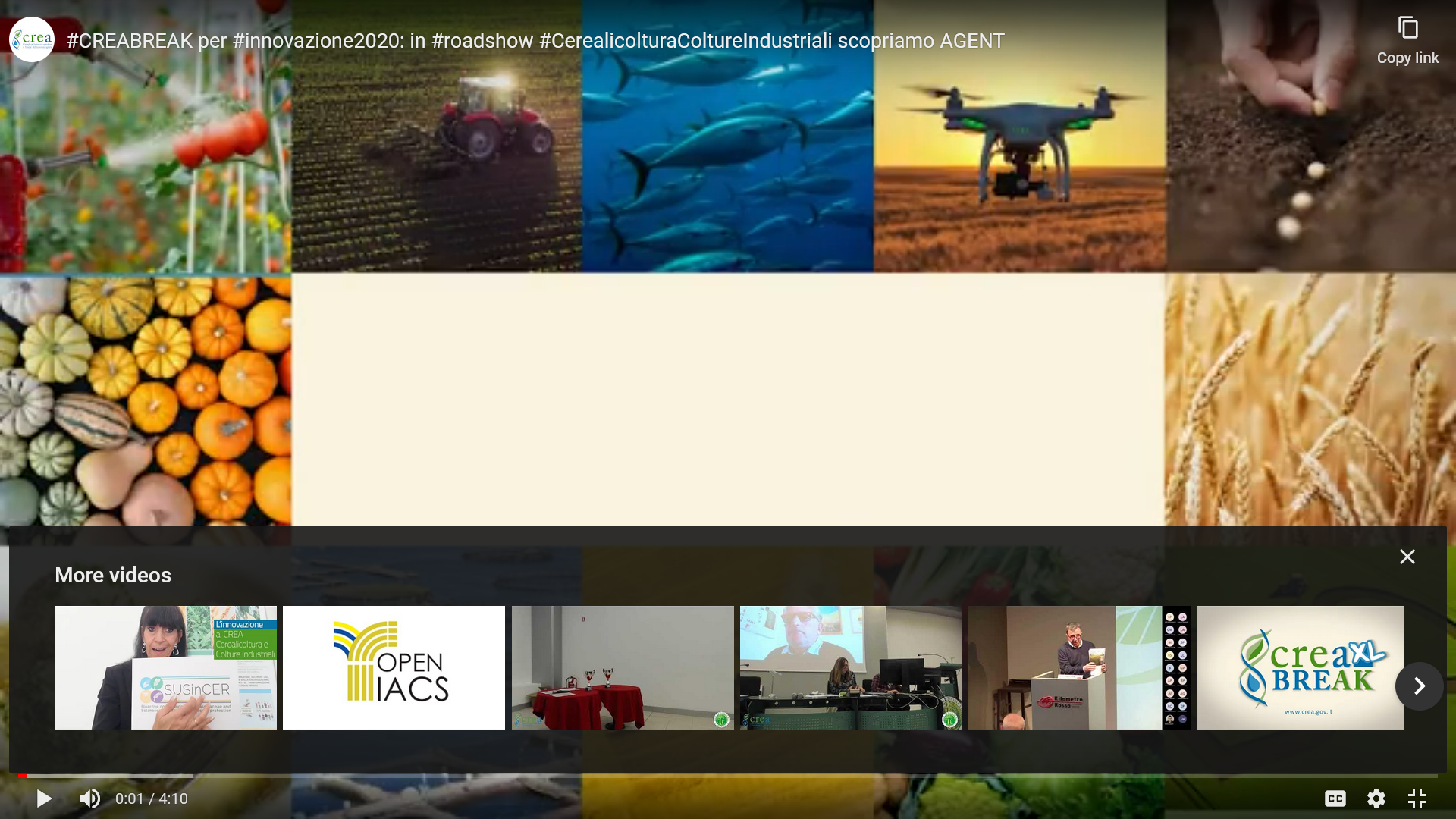AGENT features in CREA's innovation week
The project partner Consiglio per la Ricerca in Agricoltura e l'Analisi dell'Economia Agraria - Centro di Ricerca Cerealicoltura e Colture Industriali (CREA-CI) produced a short video describing the project as part of CREA's ‘innovation week’.
The video is in Italian. An English translation is provided below.
English translation:
I would like to introduce a new research activity in which we are involved, which has great potential to boost agriculture in the near future. This research is carried out as part of the project AGENT, and is focused on germplasm and germplasm banks.
(COLD ROOM) But, what is “germplasm”? For wheat, the focus of our project, germplasm is the collection of SEEDS of different varieties. In our collection we have more than 4000 different wheat varieties, from the “oldest” – maybe you heard about Gentilrosso, Ardito, Rieti, Mentana, San Pastore. (By the way, I would like to make an aside: do not call them “ancient”, it is not appropriate, let’s call them “historical”). So, we have different varieties, from the “historical” to the modern ones. And these varieties are organized in these boxes, each one in a different pot, catalogued. As you can see, I’m wearing a coat, because in this room the temperature is 4°C, which is needed to guarantee the vitality of seeds, that is their capacity, once put in appropriate conditions, to germinate giving new plants.
(GROWING CHAMBER) Each one of the thousands of varieties has its own baggage of genes, in its DNA, which confers its peculiar characteristics, both clearly visible, like the spike shape, the presence of awns, the plant height, the colour of glumes and seeds, and a bit “hidden”, e.g. the content of proteins, antioxidants, fibres in the kernel, the tolerance to some fungal diseases or stress…so imagine the GENETIC POTENTIAL present in the germplasm banks, that can be defined as a HIDDEN TREASURE!
(LAB) And here’s the goal of the project! UNLOCK THIS HUGE HIDDEN TREASURE! Unlock the genetic potential present in germplasm banks, transforming them from “simple” seed repositories to DIGITAL RESOURCES CENTRES available to the community. How are we going to do that? We will analyse 1000 different varieties, for at least two years in the field (we are going to sow them in the next days). In parallel, we are extracting their DNA and then, by very sophisticated biodigital and bio-informatic technics we’ll cross all the data in order to discover the DNA “fragments”, let’s say the genes, responsible for some interesting characters. We’ll do it on 1000 varieties and, in parallel, the other AGENT partners will do it on their own materials, coordinated by the largest European germplasm bank, at Gatersleben, in Germany. In such a way we will be able to analyse about 15,000 varieties of wheat and barley and to create a digital archive easily accessible. Briefly, if an operator of the sector is looking for particular characters to be inserted in the varieties he is realizing, he will be able to consult, freely, this archive, and see if the characteristic is present, where (in which variety), and use that variety for his crosses.
